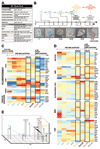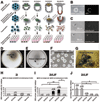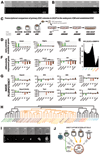The ability of inner-cell-mass cells to self-renew as embryonic stem cells is acquired following epiblast specification
- PMID: 24859004
- PMCID: PMC4878656
- DOI: 10.1038/ncb2965
The ability of inner-cell-mass cells to self-renew as embryonic stem cells is acquired following epiblast specification
Abstract
The precise relationship of embryonic stem cells (ESCs) to cells in the mouse embryo remains controversial. We present transcriptional and functional data to identify the embryonic counterpart of ESCs. Marker profiling shows that ESCs are distinct from early inner cell mass (ICM) and closely resemble pre-implantation epiblast. A characteristic feature of mouse ESCs is propagation without ERK signalling. Single-cell culture reveals that cell-autonomous capacity to thrive when the ERK pathway is inhibited arises late during blastocyst development and is lost after implantation. The frequency of deriving clonal ESC lines suggests that all E4.5 epiblast cells can become ESCs. We further show that ICM cells from early blastocysts can progress to ERK independence if provided with a specific laminin substrate. These findings suggest that formation of the epiblast coincides with competence for ERK-independent self-renewal in vitro and consequent propagation as ESC lines.
Figures







Comment in
-
Embryonic stem cell identity grounded in the embryo.Nat Cell Biol. 2014 Jun;16(6):502-4. doi: 10.1038/ncb2984. Nat Cell Biol. 2014. PMID: 24875737 Free PMC article.
References
-
- Nichols J, et al. Formation of pluripotent stem cells in the mammalian embryo depends on the POU transcription factor Oct4. Cell. 1998;95:379–391. - PubMed
-
- Chambers I, et al. Functional expression cloning of Nanog, a pluripotency sustaining factor in embryonic stem cells. Cell. 2003;113:643–655. - PubMed
-
- Guo G, et al. Resolution of cell fate decisions revealed by single-cell gene expression analysis from zygote to blastocyst. Dev Cell. 2010;18:675–685. - PubMed
Publication types
MeSH terms
Substances
Grants and funding
LinkOut - more resources
Full Text Sources
Other Literature Sources
Molecular Biology Databases
Miscellaneous

